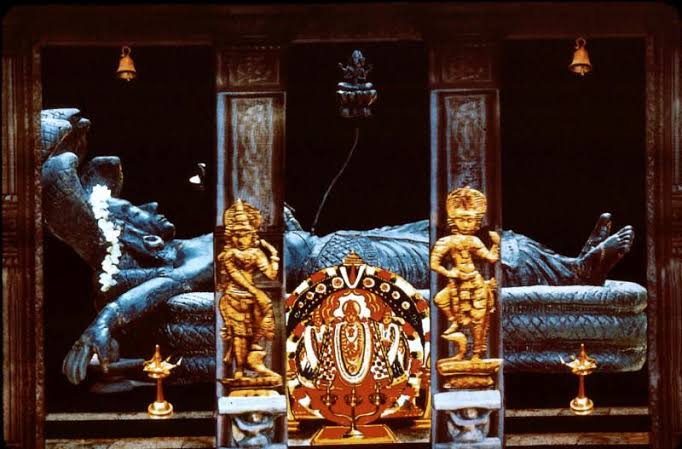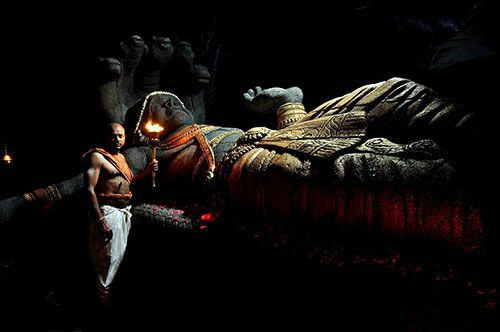Katu-Sarkara-Yogam or Kadu Sarkarayogam is an ancient technique of Vigraha(idol) making following the directions given in Shilpa Sastras. There are only a few temples in India where the Vigrahas are made of off Katu-Sarkara-Yogam process
In this method, the idol is made of rare combinations of more than 108 material naturally available in six different steps:
- .Skeleton making Good quality wood like Sandal, Karigali, Deodar is chosen & different body parts are made of from the wood and joined together with copper wire and copper.
- Astabandha Lepa. Different types of materials like Jaggary, Thribvattapasa (gum obtain from trees), a resin obtained from different trees are powered & mixed in a specific proportions in oil & ghee and heated in an earthen pot to make a paste.
- Nadi Bandhana Fine fiber from coconut husk is used to resemble the nervous system of the Idol.
- Mrth Lepana: This is the most complex process. Soil from three types of land i.e dry, marshy & desert is collected. Each type of soil is mixed with specific kashayam(concoction ) & kept for 10 days. This mixture is mixed with Triphala Kasayam & kept for another 10 days. Then river sand is added to this mixture & different other material along with Ganga water is added. The mixture is added to a concoction of llippa tree and kept for 5 days. Thus a medicinal mud is created. This mud is applied to the skeleton of an idol to obtained the desired shape.

- Silk Fixing: Pure silk is wrapped around the idol with latex to give protection to the Mrth lepana.
- Kallaka Application: River sand, black sand, and gravel sand in equal proportion powdered for a month in concoction of Triphala, gum of Koovalam &plavu.This mixture is called kalkka. This kalkka is coated on the idol and also use for ornamentation and decoration. Application of sankhu (conch)powder is used to give the Vigraha a whitening look.
The Vigraha made from Katu-Sarkara-yogam cannot have Avishekam. Other Idols are used for Avishekam.
OM NAMO NARAYANA
All information entered is personal to the author. Any modification or changes must be addressed to the author.







